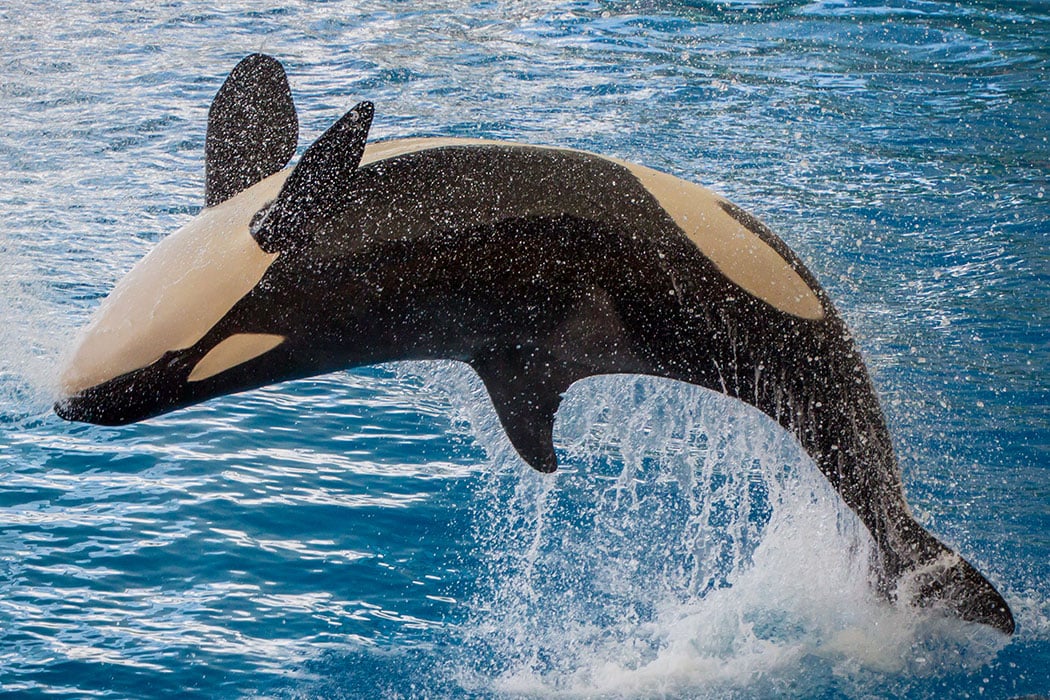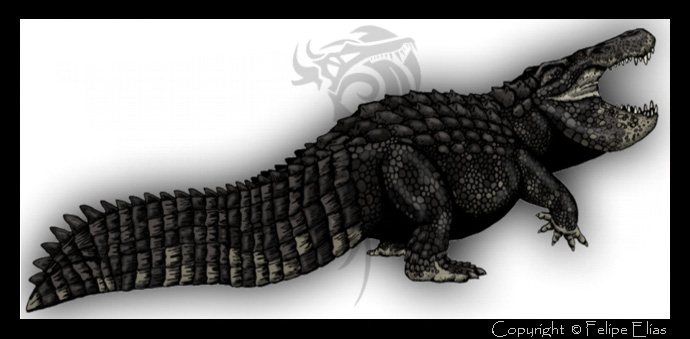Post by Infinity Blade on Jun 7, 2014 4:24:07 GMT 5
Orca-Orcinus orca
The killer whale (Orcinus orca), also referred to as the orca whale or orca, and less commonly as the blackfish, is a toothed whale belonging to the oceanic dolphin family. Killer whales are found in all oceans, from the frigid Arctic and Antarctic regions to tropical seas. Killer whales as a species have a diverse diet, although individual populations often specialize in particular types of prey. Some feed exclusively on fish, while others hunt marine mammals like pinnipeds, and even large whales. Killer whales are regarded as apex predators, lacking natural predators. Killer whales are highly social; some populations are composed of matrilineal family groups which are the most stable of any animal species. Their sophisticated hunting techniques and vocal behaviors, which are often specific to a particular group and passed across generations, have been described as manifestations of culture. The IUCN currently assesses the orca's conservation status as data deficient because of the likelihood that two or more killer whale types are separate species. Some local populations are considered threatened or endangered due to prey depletion, habitat loss, pollution (by PCBs), capture for marine mammal parks, and conflicts with fisheries. In late 2005, the "southern resident" population of killer whales that inhabits British Columbia and Washington state waters were placed on the U.S. Endangered Species list. Wild killer whales are not considered a threat to humans, but there have been cases of captive orcas killing or injuring their handlers at marine theme parks. Killer whales feature strongly in the mythologies of indigenous cultures, with their reputation ranging from being the souls of humans to merciless killers.

Purussaurus brasiliensis
Purussaurus is an extinct genus of giant caiman that lived in South America during the Miocene epoch, 8 million years ago. It is known from skull material found in the Brazilian, Colombian and Peruvian Amazonia, and northern Venezuela. The estimated skull length for one large individual of the type species P. brasiliensis is 1,400 millimetres (55 in). Paleontologists estimate that P. brasiliensis may have measured around 11 to 13 metres (36 to 43 ft) in length, which means that Purussaurus is one of the largest known crocodilians ever to have existed. Two other extinct crocodilians, Sarcosuchus and Deinosuchus, have similar proportions, but both are geologically much older, dating from the Early and Late Cretaceous, respectively, and another from the Miocene of India, Rhamphosuchus, is estimated to be slightly smaller, though assumed to have been proportioned like a gharial. During the summer of 2005, a Franco-Peruvian expedition (the Fitzcarrald expedition) found new fossils of Purussaurus in the Peruvian Amazon (600 km from Lima). Analysis of a biomechanical model of the skull of Purussaurus has indicated that it would have been capable of performing the "death roll" maneuver used by extant crocodilians to subdue and dismember their prey. Brazilian P. brasiliensis is associated with sharks, rays, freshwater teleosts, lungfish, turtles including Stupendemys, crocodilians including Charactosuchus, Gryposuchus, and Mourasuchus, Anhinga birds, and mammals including sloths, bats, rodents, the primate Stirtonia, and river dolphins. River, floodplain, and lake environments were present. Marine and freshwater fish, turtles, crocodilians, and terrestrial and aquatic mammals are associated with Venezuelan P. mirandai. Its environment is described as tropical and coastal. The earlier Colombian P. neivensis lived alongside a massive variety of fauna, including astrapotheres like Granastrapotherium and Xenastrapotherium, the early species of Mourasuchus and Gryposuchus, and the terrestrial crocodyliform Langstonia. This fauna dates from 13 million years ago, in the Laventan stage of the Late Miocene.

The killer whale (Orcinus orca), also referred to as the orca whale or orca, and less commonly as the blackfish, is a toothed whale belonging to the oceanic dolphin family. Killer whales are found in all oceans, from the frigid Arctic and Antarctic regions to tropical seas. Killer whales as a species have a diverse diet, although individual populations often specialize in particular types of prey. Some feed exclusively on fish, while others hunt marine mammals like pinnipeds, and even large whales. Killer whales are regarded as apex predators, lacking natural predators. Killer whales are highly social; some populations are composed of matrilineal family groups which are the most stable of any animal species. Their sophisticated hunting techniques and vocal behaviors, which are often specific to a particular group and passed across generations, have been described as manifestations of culture. The IUCN currently assesses the orca's conservation status as data deficient because of the likelihood that two or more killer whale types are separate species. Some local populations are considered threatened or endangered due to prey depletion, habitat loss, pollution (by PCBs), capture for marine mammal parks, and conflicts with fisheries. In late 2005, the "southern resident" population of killer whales that inhabits British Columbia and Washington state waters were placed on the U.S. Endangered Species list. Wild killer whales are not considered a threat to humans, but there have been cases of captive orcas killing or injuring their handlers at marine theme parks. Killer whales feature strongly in the mythologies of indigenous cultures, with their reputation ranging from being the souls of humans to merciless killers.

Purussaurus brasiliensis
Purussaurus is an extinct genus of giant caiman that lived in South America during the Miocene epoch, 8 million years ago. It is known from skull material found in the Brazilian, Colombian and Peruvian Amazonia, and northern Venezuela. The estimated skull length for one large individual of the type species P. brasiliensis is 1,400 millimetres (55 in). Paleontologists estimate that P. brasiliensis may have measured around 11 to 13 metres (36 to 43 ft) in length, which means that Purussaurus is one of the largest known crocodilians ever to have existed. Two other extinct crocodilians, Sarcosuchus and Deinosuchus, have similar proportions, but both are geologically much older, dating from the Early and Late Cretaceous, respectively, and another from the Miocene of India, Rhamphosuchus, is estimated to be slightly smaller, though assumed to have been proportioned like a gharial. During the summer of 2005, a Franco-Peruvian expedition (the Fitzcarrald expedition) found new fossils of Purussaurus in the Peruvian Amazon (600 km from Lima). Analysis of a biomechanical model of the skull of Purussaurus has indicated that it would have been capable of performing the "death roll" maneuver used by extant crocodilians to subdue and dismember their prey. Brazilian P. brasiliensis is associated with sharks, rays, freshwater teleosts, lungfish, turtles including Stupendemys, crocodilians including Charactosuchus, Gryposuchus, and Mourasuchus, Anhinga birds, and mammals including sloths, bats, rodents, the primate Stirtonia, and river dolphins. River, floodplain, and lake environments were present. Marine and freshwater fish, turtles, crocodilians, and terrestrial and aquatic mammals are associated with Venezuelan P. mirandai. Its environment is described as tropical and coastal. The earlier Colombian P. neivensis lived alongside a massive variety of fauna, including astrapotheres like Granastrapotherium and Xenastrapotherium, the early species of Mourasuchus and Gryposuchus, and the terrestrial crocodyliform Langstonia. This fauna dates from 13 million years ago, in the Laventan stage of the Late Miocene.
















